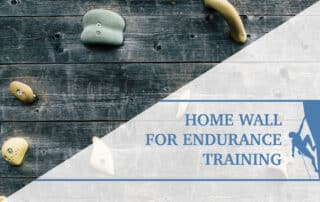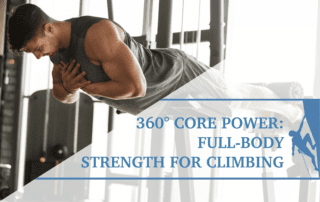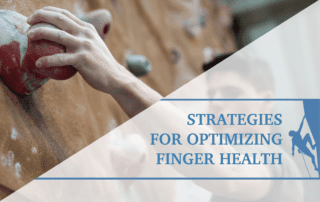Setting Bouldering Goals During Pregnancy
Bouldering during pregnancy can be good for your mental and physical health if necessary precautions are taken. It also helps to feel part of the community as bouldering is a social sport.
Using a Home Climbing Wall for Endurance Training
Like many others during the pandemic, my local climbing gym got shut down. I was not as fortunate as others to have close access to outdoor climbing areas. It’s pretty flat here in Michigan, so this left me with two choices: drive 7+ hours to Red River Gorge or build a home wall. I [...]
360° Core Power: Unlock Full-Body Strength for Climbing
Building core strength is crucial for climbers and anyone who wants to enhance full-body control, stability, and movement efficiency. Our core is more than just our abdominals; it functions in a 360° capacity, spanning all planes of movement. This means core training should include flexion, extension, side bending, and rotation exercises. Here, we’ll explore [...]
Unlock Your Hips: Mobility Boosters for Climbers
Hip mobility is essential for climbers, providing the flexibility and range needed for dynamic movement on the wall. Stiff hips can limit performance and increase strain on other areas of the body, but targeted stretching and mobilization can improve hip motion and that can translate into better climbing efficiency. This article outlines effective hip [...]
Strategies for Optimizing Finger Health
Our fingers bear considerable force while climbing. Yet, as we focus on strength and technique through climbing and fingerboarding, we often overlook the critical aspect of finger health. Fortunately, there are effective methods we can incorporate into our routines to help prioritize finger health and avoid finger injuries as climbers. Here, we present three [...]
Mastering Dynamic Techniques and Gaining Power
Climbing is a blend of strength, agility, precision, and power. Whether you're in the process of learning competition movements or aiming to master dynamic climbing, power and technical skills are essential for improving climbing performance. In this comprehensive blog post, we'll explore various insights and tips into mastering climbing movements technically and optimizing power [...]






